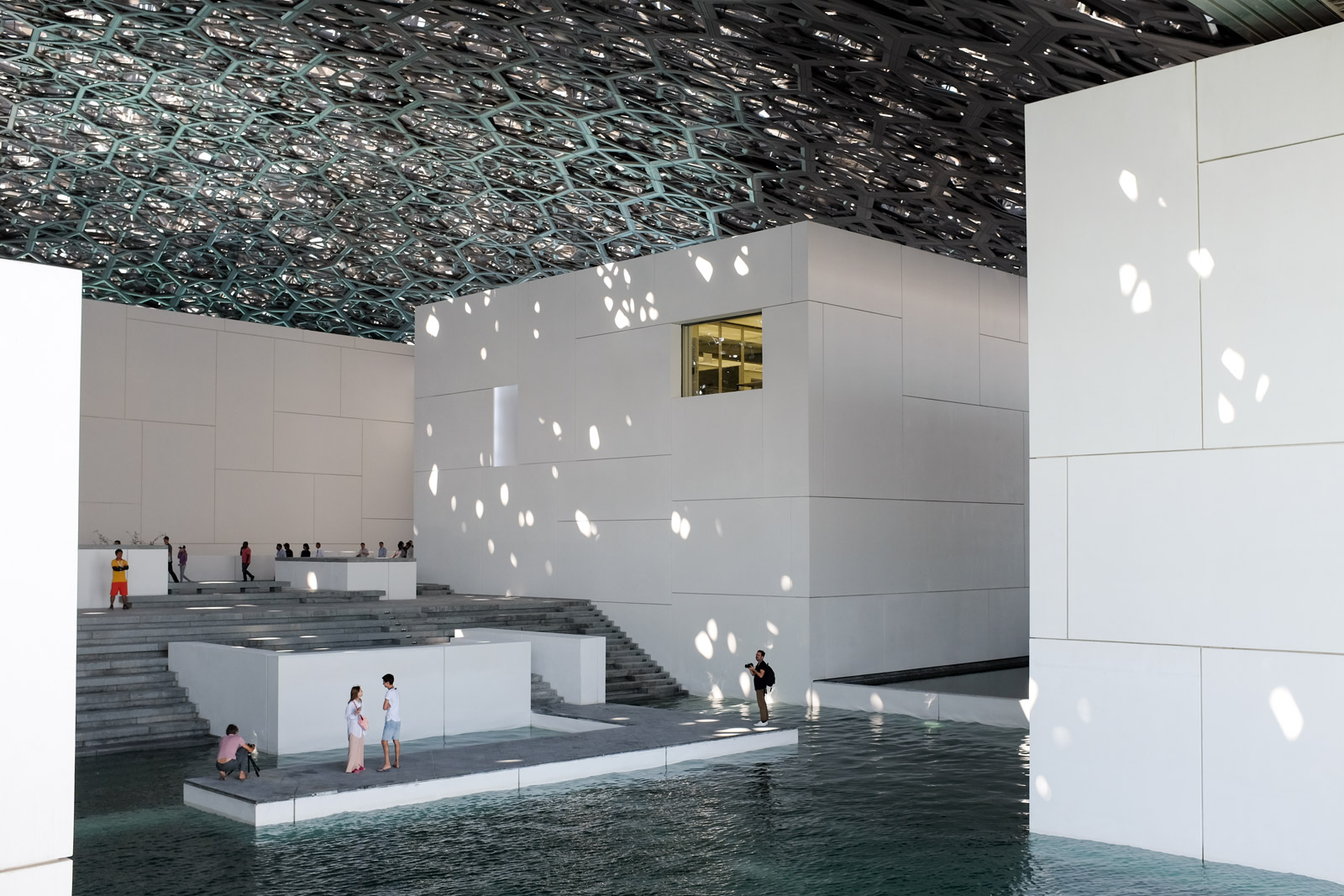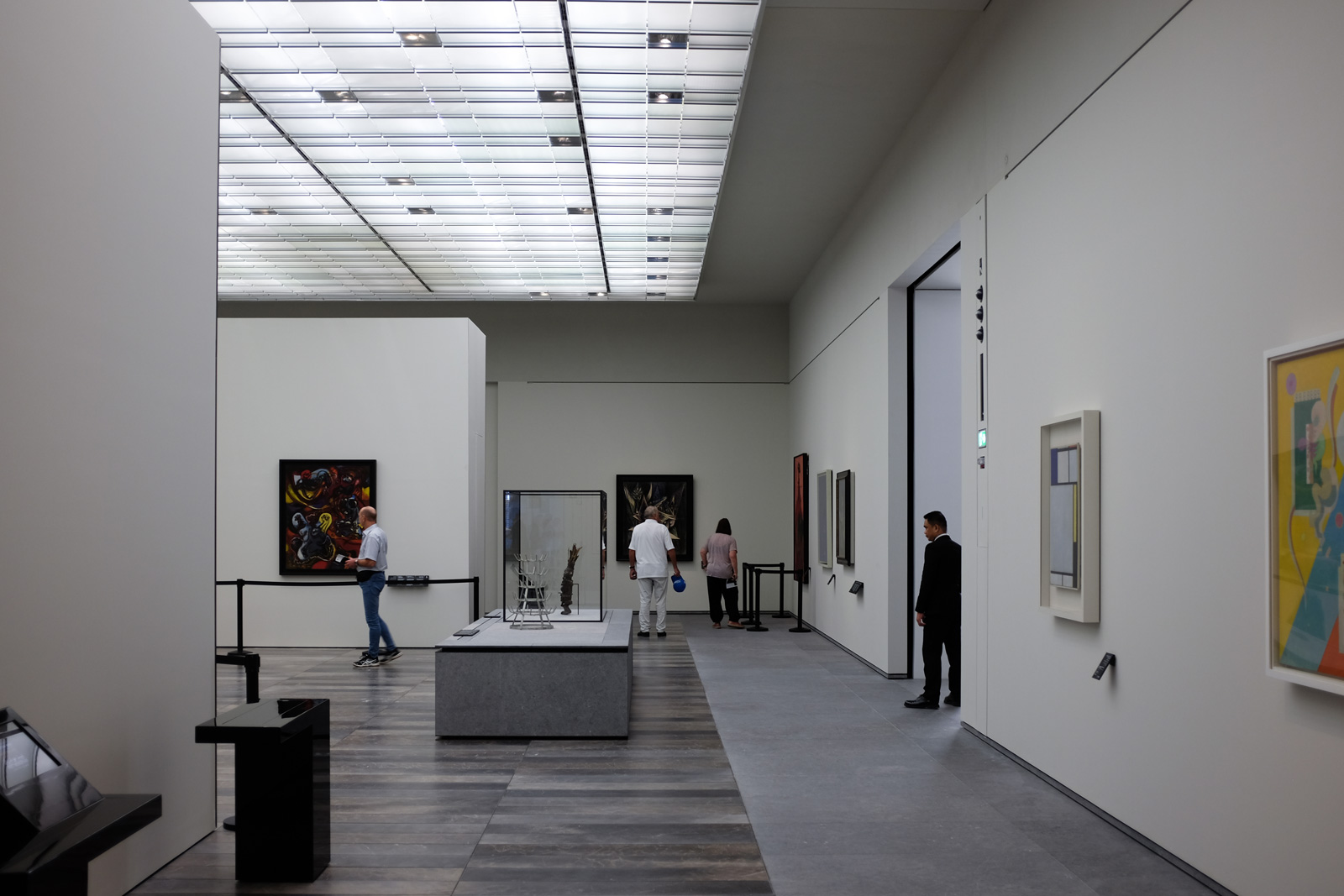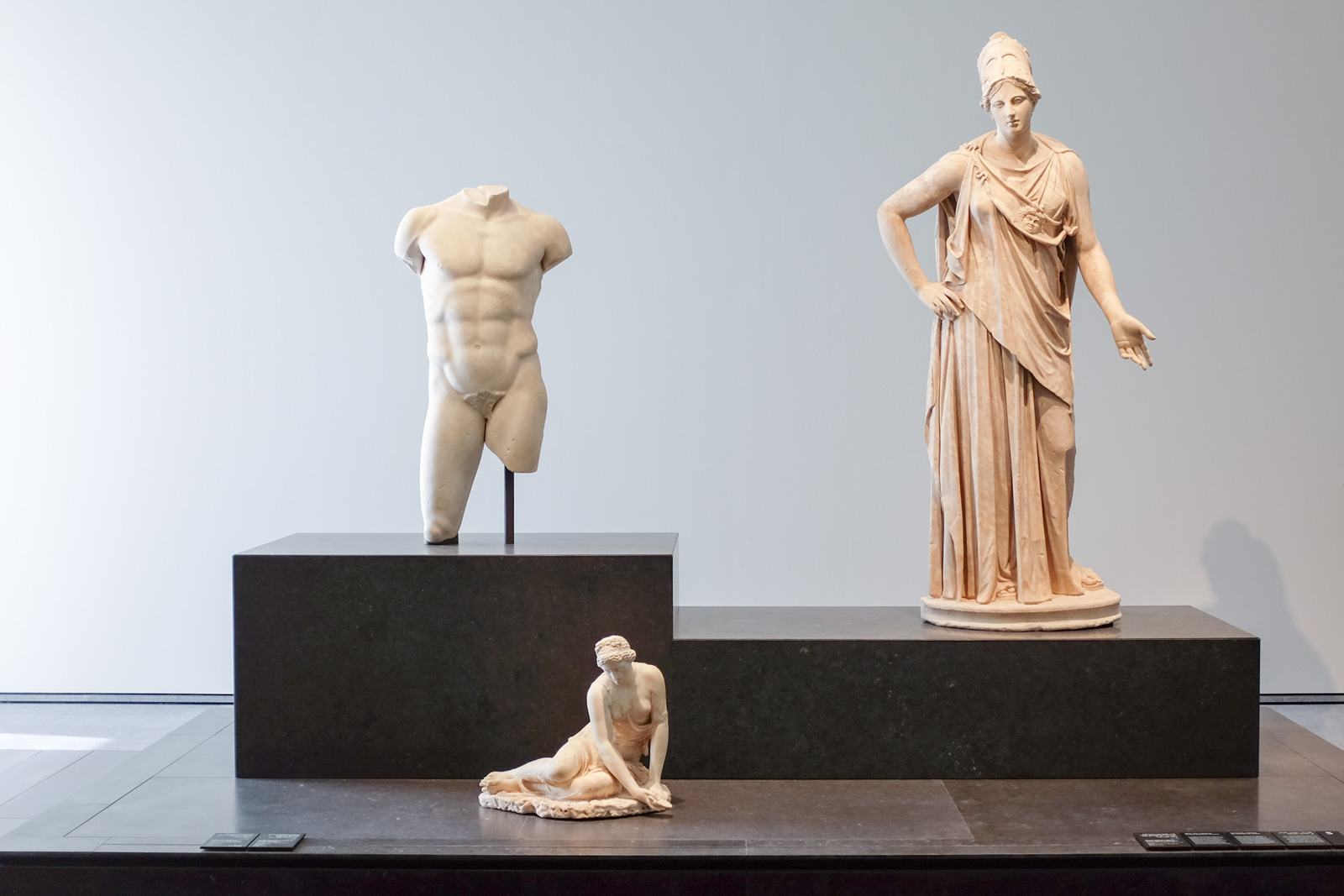Inside the Brand New Louvre Abu Dhabi
From Da Vinci to Ai Wei Wei, in a stunning Jean Nouvel building that embraces the sea and sky

While in Dubai for Design Week, we took the opportunity to take a quick tour of the new Louvre Abu Dhabi, possibly the most anticipated architectural opening of the year. The museum, designed by architect Jean Nouvel, welcomed their first guests just a few days ago. It was 10 years in the making and it covers an area of 87 thousand square-meters, divided in 55 detached edifices covered by a gigantic cupola, a remarkable new icon for the United Arab Emirates.
To understand the museum, it’s best to break down some of its components. First of all: the name. This is not a replica of the original Louvre in Paris, but a new project, born from a collaboration between the Department of Culture and Tourism of Abu Dhabi and Agence France-Muséums, a partnership of 13 French museums and other cultural institutions.

This is the first museum that will constitute the future Saadiyat Cultural District with other new additions being the Zayed National Museum by Norman Foster, the Maritime Museum designed by Tadao Ando, Guggenheim Abu Dhabi by Frank Gehry and the Performing Arts Centre by Zaha Hadid. What was a deserted island, in a few years will become one of the most sought-after cultural destinations on the planet.

The Louvre Abu Dhabi building stands beside the sea and the dialogue between architecture and natural elements is the key to the whole project. The central open-air plaza touches both the water and the sky, thanks to canals and the intricate roof that lets light in and air circulate. Despite the very hot temperature outside, it feels like being under a patio or in the woods. Nouvel wanted such a natural cooling system in order to recreate the atmosphere of a modern souk and keep an open dialogue with the local architecture.

Everything here is based on the constant presence of natural light, something pretty unusual for a traditional museum. It’s everywhere in the building, inside and outside, but filtered and shaded in order to protect the works of art. The lighting system is a mixture of sunlight and artificial light. Depending on the moment of the day and the weather conditions, the different sources of illumination play accordingly. The safety of the collection and loans is pivotal, so the entire structure is anti-seismic and in case of power outage or drastic situations, insulation makes it possible to keep the temperature and humidity required by the strict standards of the Louvre (21° centigrade and 50% humidity) for at least 24 hours.

The director of the museum is Manuel Rabaté and his mission is to open a dialogue between the East and the West. The core concept of the collection is the exploration of human civilization through artifacts, from prehistoric times to today. The first room, Grand Vestibule, gives a clear sense of such approach. On display we find universal objects such as death masks, representations of women and children, instruments for prayer, and water tools. Three object per category, they represent the common questions of humanity and help visitors to discover different answers given by people and artists from various times and places.

Curator Jean-Luc Martinez and his team chose to go beyond the classic moments of art history and divided the path into 12 steps, from “The First Villages” to “A Global Stage.” The actual collection features 620 works, 300 of which are loans from French museums and the rest is part of the permanent collection of Louvre Abu Dhabi. The works are not displayed in a rigorous chronological oder, but nevertheless it’s easy to perceive a sense of the evolution of humanity. It’s nice to see Renaissance masterpieces close to wooden artifacts, ancient Roman statues side by side with Chinese dragons, as well as Pop Art next to Impressionism. It’s almost impossible to quote all the masterpieces. “La Belle Ferronière” by Leonardo Da Vinci is already being considered “the Mona Lisa of the Middle East,” and visitors will recognize Vincent van Gogh’s self-portrait, Jacques-Louis David’s famous portrait of Napoleon on horseback, “The Fifer” by Édouard Manet. Contemporary art enthusiasts will find Jenny Holzer, Giuseppe Penone and Ai Wei Wei.

One other clear choice of the curators was to be highly narrative and not academic. Their assumption is that contemporary tourists and visitors do not go to museums to have an art history class, but to be inspired and surprised. This is the reason why the museums avoids detailed explanations, and offers just the basic coordinates for each object and work of art. Whoever gets interested in a piece, artist or culture will eventually start to investigate and independently research it later.

The museum will feature four new temporary exhibitions per year. The exhibition “From One Louvre to Another: opening a museum for everyone” will open on 21 December. It will trace the history of the most famous museum in the world.
Images by Paolo Ferrarini











